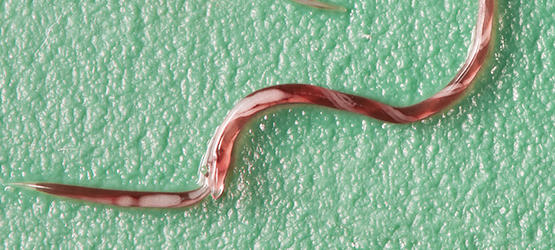Research
We predominantly use two nematode species for experimental studies; Haemonchus contortus, an experimentally tractable parasitic nematode of sheep with a high propensity to develop resistance and Caenorhabditis elegans, a free-living nematode which is one of the most powerful model organisms in biology. We have a number of complimentary research projects:

Genomic and Genetic Approaches to Investigate Anthelmintic Resistance
We are developing H. contortus as a model system collaborating on the H. contortus genome project currently being undertaken at the Sanger Institute and developing genetic crossing strategies for this organism in collaboration with the Moredun Institute. The aim is to apply an integrated approach to identify key resistance loci applying both transcriptomics (using next-generation sequencing technologies) alongside forward genetic strategies.

Molecular Epidemiology/Population Genetics of Anthelmintic Resistance
We have a number of projects looking at the population genetics of gastrointestinal nematodes in livestock and applying molecular genetic approaches to study the emergence and spread of resistance.

Drug Metabolism in Nematodes and its Potential Role in Anthelmintic Resistance
How nematodes metabolize and excrete drugs is poorly understood and yet these are potentially important mechanisms of resistance (indeed proven mechanisms in the case of pesticide resistance in insects). We are using H. contortus and C. elegans to investigate the metabolism of anthelmintics by nematodes, to identify the enzymes involved and to determine their effects on drug potency and roles in resistance.

Functional Analysis of Parasite Genes using C. elegans
Most parasitic nematodes, including H. contortus, lack the in vitro culture systems and tools necessary for detailed functional studies. We use C. elegans (which is phylogenetically close to H. contortus) as a heterologous expression system to determine the ability of different parasite genes (and alleles) to confer resistance in vivo.
